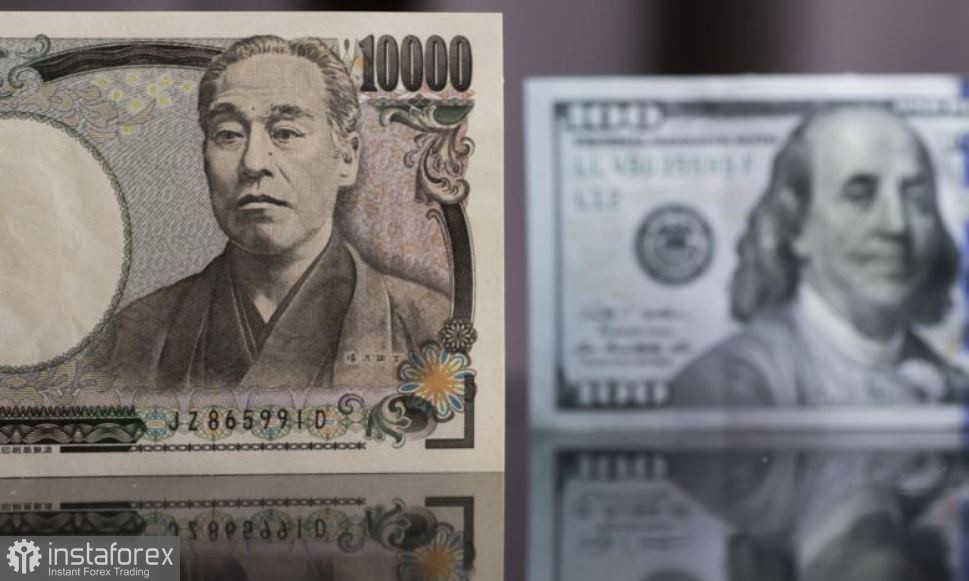The Bank of Japan will conduct its meeting on the last day of October. This will be the penultimate meeting of the year for the members of the Japanese central bank, and it could provoke significant volatility in the USD/JPY pair. The question is, which way this volatility will work. If the central bank keeps all parameters of monetary policy unchanged and delivers its usual rhetoric, the pair may once again test the 150.00 level. However, if the BOJ surprises the market with a hawkish tone (or effectively raises bond yields), then the yen could strengthen, at least to the lower line of the Bollinger Bands indicator on the 1D chart, which is around 148.50, and more likely, toward the 147.40 target (the upper band of the Kumo cloud) on the same timeframe.
All preceding statements from the BOJ indicate that the central bank will adopt a wait-and-see approach, especially in light of the latest inflation data in the country (which we will discuss shortly). However, the BOJ is likely aware of the consequences of such a move. It may be more challenging to "put out the fire" and bring the pair back below 150.00 than to prevent it from "igniting" in the first place. Therefore, the central bank may still present a hawkish surprise, at least in its verbal communique.

Almost a year ago, in December 2022, the BOJ effectively broadened the yields permissible on the 10-year JGB by 50 basis points (previously, the range was plus/minus 0.25%). This decision was unexpected because for many years prior, the central bank had not changed its parameters for yield curve control (YCC), always stating that monetary policy could be further eased if necessary. Therefore, the unexpected decision to expand the bond yield range was seen by many traders as a signal that the BOJ was preparing to move away from its ultra-soft monetary policy, which it had adhered to for almost two terms of former Governor Haruhiko Kuroda. These expectations did not materialize, but in the moment, the yen significantly strengthened its positions across the market, even against the dollar.
Today, many experts (including currency strategists at Societe Generale) assess the likelihood of the central bank raising the effective limit on ten-year bond yields as 50/50. Each of these two scenarios has clear consequences. If the central bank maintains the yield ceiling at the current level, the bulls will try to consolidate above the 150.00 level. Market participants have been attacking the 150.00 level for the fourth consecutive week but have not yet dared to storm this price stronghold. All previous attempts have ended in failure. However, if the BOJ maintains a dovish stance and does not calibrate YCC, the bulls will go on the offensive at their own risk.
It's worth noting that according to the forecasts of most currency strategists, the BOJ will continue to adhere to its current position, leaving its monetary policy unchanged.
But if the BOJ does decide to adjust the target yield level to the upside, the yen will strengthen at least to the 147.00 level. It's worth noting that the head of the central bank, Kazuo Ueda, stated in an interview that the central bank may reconsider its policy, but only when it realizes it's close to achieving its goal of stable inflation at a 2% level.
Given this position, one argument in favor of possible YCC calibration is inflation, which demonstrated a declining trend in September. Japan's Consumer Price Index dropped to 3.0% YoY, compared to an expected drop to 3.1% (the slowest pace of growth since September 2022). The CPI excluding fresh food in September was down to 2.8% (the lowest since August of the previous year), compared to 3.1% in August. The CPI, excluding food and energy, also declined (4.2% compared to 4.3% the previous month).
Nonetheless, the most likely scenario for the BOJ's October meeting is to maintain the status quo. The central bank will leave its monetary policy unchanged and may note some progress in lowering inflation (without additional hawkish hints). In response, the USD/JPY pair may again test the resistance level at 150.00, but it's not advisable to "trust" long positions in such conditions. Once the initial emotions settle, traders will start thinking about the potential reaction from the Japanese Ministry of Finance. The bullish momentum will fade, and the bears will regain the initiative. Therefore, in my opinion, any price spikes in USD/JPY should be seen as an opportunity to open short positions.
 English
English 
 Русский
Русский Bahasa Indonesia
Bahasa Indonesia Bahasa Malay
Bahasa Malay ไทย
ไทย Español
Español Deutsch
Deutsch Български
Български Français
Français Tiếng Việt
Tiếng Việt 中文
中文 বাংলা
বাংলা हिन्दी
हिन्दी Čeština
Čeština Українська
Українська Română
Română

